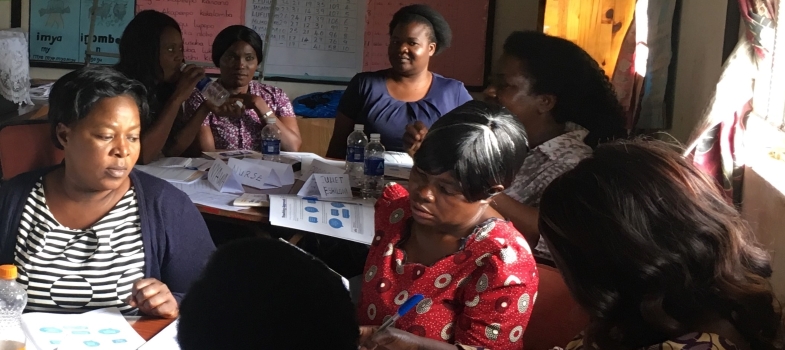Training guide
6. Assessing learning
6.3. Examples of formative assessment (3)
Classroom Example 3.5: Formative assessment for understanding fractions
Audio transcript Geoffrey is working on proper fractions with his Grade 3 class. He wants to ensure that they all understand proper fractions and can explain their understanding of the topic. Geoffrey begins the lesson by taking a banana out of his bag. He tells the students that he wants to give an equal part of the banana to five of his friends and asks them to tell him how he can do that. Several students put their hands up and Geoffrey elicits the response that they will cut the banana to make five equal parts. Each one is a fifth. He writes 1/5 on the chalkboard. Geoffrey tells the students they are going to work in pairs and asks them all to point to their partner. He then gives them four tasks to do around dividing bananas into equal parts or fractions. He asks them to divide an imaginary banana into 4, 6, 8 and 9 parts. For each one he asks them to write down the fraction. As the students are working through the tasks, Geoffrey circulates around the classroom monitoring the students and asks them to explain how they reached their answers. He avoids telling them the answer but waits for them to find it and encourages pairs to help each other. In this way he is able to identify where there are problems of understanding. When all the learners have completed the tasks, Geoffrey asks for volunteers to write each answer on the chalkboard. He then writes up two more fractions: 1/3 and 1/10. He asks them to say which one represents the smallest piece of a banana; which one represents the largest; and how they know. At the end, he helps them to deduce that the larger the number on the bottom of the fraction, the smaller the piece of banana. |
|
Did you notice:
|
